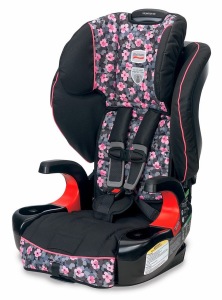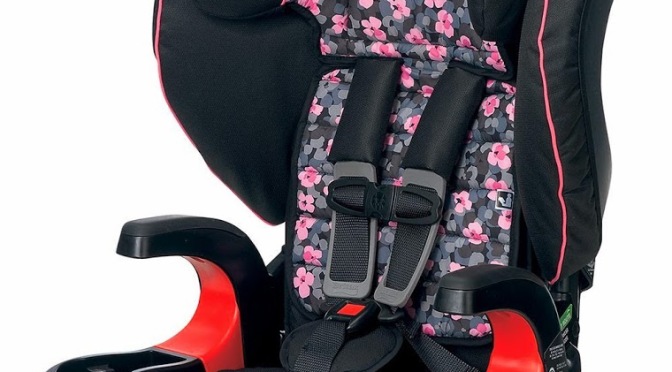
I’ve written before about the importance of keeping young children rear-facing as long as possible, but am always keen to write more on the topic. It’s why the only car seats I recommend and review are those with the highest rear-facing and forward-facing limits currently available in the United States. The Frontier G1.1, pictured above, is the best forward-facing and booster seat you can buy today.
However, another area where most parents aren’t following best practices involves the transition from forward-facing children in 5-point harnesses to using booster seats. When should this be done? When is too early? What makes it too early? This post is designed to answer these kinds of questions and to serve as a reference to be shared.
First, Rear-Face to the Limits
First of all, for physiological reasons, we should try to rear-face our children until they’ve outgrown the height or weight limits for their seats. Children’s spinal cords and musculature are in development, and simply aren’t as strong as those of adults or even older children. Rear-facing them distributes forces more easily and offers them much more protection than forward-facing. The best seats right now, the Clek Fllo, the Clek Foonf, the Diono Rainier, the Graco Extend2Fit, the Graco Extend2Fit 3-in-1, the Graco 4Ever Extend2Fit, the Nuna Rava, the Safety 1st Advance EX 65 Air+, and the Safety 1st Grow and Go EX Air, provide up to 50 lbs of rear-facing time by weight, allowing most kids to rear-face until at least 5.
That’s standard practice in Sweden.
Whether you’re forward-facing at 50 lbs or earlier, but still at the limits of your seat, you’ll want to keep doing so until your child outgrows his or her forward-facing seat by weight or height. Remember that straps should be at or above the child’s shoulders and the ears of the child should be below the top of the shell. Also remember to attach the top tether every time the seat is installed or in use.
Let’s say you’ve checked off all of the issues above, but your child happens to be 4 (or 3, or 2…). Can you switch?
Don’t Rush Boostering Your Child
No! It’s too early. This is just like how the current law for forward-facing in the US is that it can be done (though it’s a bad idea) from when the child is 1. Just because it’s legal doesn’t mean it’s right. For example, it’s legal to drive cars without seat belts (really!) in the US as long as they were made before seat belts were required in vehicles (in the mid 1960s). Does that mean it’s a good idea?
No! Because there’s yet another factor to consider, and that’s the positioning of the child. Something most parents don’t know is that a child needs to be able to stay seated properly (as in upright, and not leaning forward, to the left, to the right, or reaching for things or twisting back and forth or horsing around) 100% of the time, including while asleep, in order to be a safe booster candidate.
This is the maturity angle that’s very easy to overlook, and this is part of why booster training is recommended and keeping young children out of them is also a good idea. If a wriggly child is in a 5-point-harness, he or she is kept safe in a collision (although not as safe as when rear-facing, but we can’t rear-face them forever). If that same wriggly child is wriggling in a seat belt, he or she will fare much worse in a collision, as the belt will not be able to protect him or her nearly as well.
So What’s a Minimum Age for Using a Booster?
So what’s the earliest you should even *consider* switching from forward-facing to a booster? Personally, I’d suggest waiting until 5 at a minimum. Why? Because right now, right this day, there are seats that can keep children rear-facing until then. Growth charts show that a 50th percentile girl will reach 50 lbs at age 7 and 44″ at 5 years, 5 months. A 50th percentile boy will reach 50 lbs and 44″ at exactly the same ages. In other words, the average child won’t outgrow the best convertibles on the market until s/he is around 5 and a half years old!
But what if you don’t have the budget for a 50 pound rear-facing seat? Well, the growth charts above show that a 50th percentile child will reach 40 pounds at around age 5. This means that a 40 pound convertible like the Graco Size4Me 65 that’s tall enough to allow virtually all children to outgrow it by weight instead of by height will be able to keep the average child rear-facing until 5!
Placing children in a booster when they’re still capable of fitting in a rear-facing seat is unnecessarily risky, somewhat like riding in our metaphorical seat belt free car when you’ve got a perfectly normal seat belted car at your disposal. The odds are that you won’t crash, but the odds will be dramatically against you if you do. The same goes for young children placed in boosters when they’d fit in rear-facing seats.
Now what if your child is on the taller or heavier end, or you simply don’t have the finances for a high weight/height convertible? Is your only option to booster your young child?
No. You can booster–in fact, the research doesn’t show a safety difference for forward-facing seats and booster seats for children who are old enough to sit properly in booster seats–but you can also forward-face.
It’s really up to you and the maturity of your child
On one hand, Swedish kids start forward-facing when they’re 4 or 5, and they have the best records of child auto fatalities on the planet. However, you know your child best, and it’s all right to keep forward-facing until the seat is outgrown. Most forward-facing seats allow you to do so until at least 65 pounds, and that’s the equivalent of a 9-year-old 50th percentile child (keeping in mind that most children will outgrow most seats by height before by weight).
However, ignoring seat fit questions and focusing on age for the moment, will a 7, 8, or 9-year-old be able to be taught to sit maturely in a booster seat with a seat belt? Yes! Is the same going to be true for a 2, 3, or 4-year-old?
I doubt it. To be honest, I doubt it’ll be true for most children in the US under 5, which is where I think the average child will be ready to transition into a booster seat. So in general, I’d recommend waiting until at least 5 for many kids, with 4 as the absolute minimum.
The NHTSA recommendation is to forward-face until 8 if possible. But to draw the line at a real-world absolute minimum point, I’d draw it at age 5, for both physiological, developmental, and practical reasons. Physiologically, their bodies simply aren’t ready before 5. Developmentally, they aren’t nearly mature enough before 5. Practically, there are seats that can keep them rear-facing until 5 or even beyond.
All of this adds up to suggest children should not be switched from forward-facing car seats into booster configurations until they’re at least 5, and optionally not until 8. It’s a bit more work, but it’s worth it. Here are the seats that are as good as it gets for rear, forward-facing, and boostering today in the United States. I wholeheartedly recommend them.
—
If you find the information on car safety, recommended car seats, and car seat reviews on this car seat blog helpful, you can shop through this Amazon link for any purchases, car seat-related or not. Canadians can shop through this link for Canadian purchases.

